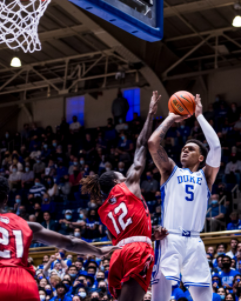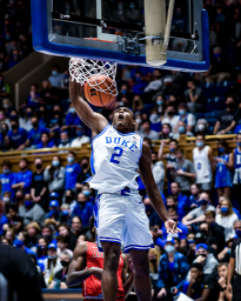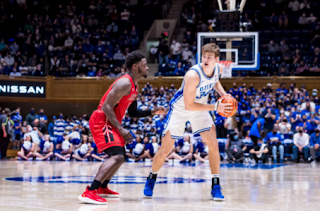Many niche sports fans are familiar with “The Ewing Theory”, a theory originated by Dave Cirilli and popularized by Bill Simmons which posited that Ewing’s teams, both Georgetown and the New York Knicks, played better when he was off the court. It was never a slight at Ewing or a suggestion that the seven-time All-NBA player was a bad or negative basketball player, but rather an assertion that when he was in the game, his teammates and coaches relied on him too heavily and his absence from the court allowed other players cast in lesser roles to flourish.
Over the years, there have been countless examples across all major team sports of star players who were either injured or traded away, only to see their team survive, and sometimes even flourish, without them. Those aware of Bill Simmons’ work are quick to cite The Ewing Theory in these instances, even when the greater public will have no clue how the shorthanded team could possibly not feel the effect of losing the player whom the public perceives as its most important... it shouldn’t make sense.
Insert the 2023-24 Duke Blue Devils. Through 21 games, Duke is 16-5 and ranked #7 in the country, though that ranking will likely fall after Saturday night’s loss to North Carolina. While it hasn’t been quite the season many expected in Durham – the Blue Devils were ranked #2 in the preseason AP Top 25 behind only Kansas – Duke has certainly improved in Jon Scheyer’s second season at the helm.
With such a talented nucleus, it’s impossible to single out just one player’s efforts as the primary reason for the team’s success. However, the plurality of the credit from fans and the mainstream media has been given to sophomore center Kyle Filipowski, who returned to Bull City for a second season after winning ACC Rookie of the Year and leading the Blue Devils to the 2023 ACC Tournament Championship (he also won the tournament’s Most Outstanding Player award for his efforts).
He was the third of three freshmen starters to announce his intentions to return to school for another year. To make things even better, senior guard Jeremy Roach withdrew his name from the NBA Draft and 247's #2 ranked recruiting class was on its way. Duke hadn’t returned over 60% of both its minutes played and scoring total from the previous season since 2009-10 when Scheyer was a senior captain, and you know what happened then. Make no mistake about it, this team was supposed to be special.
 |
| Filipowski's final game of his freshman season may have sparked his return. (Source: Getty Images) |
Filipowski, or “Flip”, entered the year as the Preseason ACC Player of the Year and a consensus Preseason All-American, and to the untrained eye, he’s lived up to those lofty expectations. He’s averaging 17.7 points, 8.5 rebounds, 2.8 assists, and 1.8 blocks per game. He’s upped his two-point field goal percentage from 50.5% as a freshman to 56.1%, and his three-point percentage has similarly increased from 28.2% to 35.6%. He’s seemingly solidified himself as a potential lottery pick in the upcoming 2024 NBA Draft – ESPN currently has him 9th on its list of best available prospects.
So why has his play frustrated so many of those who watch the team game in and game out? Why has it often seemed like the impact on the court hasn’t lived up to the endgame stat line? For example, last night against North Carolina, he had 22 points on 9-17 shooting and 5 rebounds, but not a single person who watched, save his immediate family, would tell you he had a good game. His 17 point, 15 rebound performance against lowly Louisville wasn’t given much more fanfare. Where is the disconnect coming from?
Throughout the course of the game and especially when Duke is in need of a basket, Scheyer will often count on Filipowski to make a play and draw up a set to isolate him against his defender, either in the low post or out on the perimeter. The result has been a mixed bag. At its worst, viewers have seen a lot of spin moves into a defender, frustrating mid-range fadeaways, step-back three pointers clanging off the rim, and many other variations of a failed possession.
To his credit, there are also times he has delivered. Perhaps the most notable was a late-game possession against Clemson. The Blue Devils, who inbounded the ball down two, improbably took a one-point lead with just a handful of seconds to go thanks to an old fashioned three-point play from Flip, who calmly sunk the go-ahead free throw despite only being 4-10 from the line in the game up until that point. But more on that later.
But The Ewing Theory is much more than just an eye test, and the case for Filipowski’s candidacy is supported by the numbers. First, let’s look at the offense. In games against power conference opponents, Duke has scored 109.5 points per 100 possessions with Filipowski on the court in live-ball situations (excluding late-game fouling, technical free throws, etc.). Without Filipowski on the court, the Blue Devils have scored 113.1 points per 100 possessions against those same opponents, meaning they’ve been 3.6 points better without their leading scorer.
 |
| Filipowski's gaudy numbers have not translated to on-court impact so far this year. (Source: GoDuke) |
What is the reason for this? One immediately has to wonder if Filipowski has the athleticism to consistently dominate high-level competition. His scoring, rebounding, assist, steal, and block rates have all been lower this year against power conference teams (yes, it’d be fair to expect a slight drop-off as the competition gets harder). He’s shooting 46.6% from the field (51.8% from two, 33.3% from three) in these games, a low mark for a center even with all the outside shots he takes. After shooting over 76% from the free throw line as a freshman, he’s been just a measly 63% in these games, including 28/50 (56%) in the last eight. And, no, you’re not the only one remembering that a lot of the recent misses have been short... is he wearing down?
Whatever the reason, the Blue Devils are better suited running the offense through the perimeter than their talented big man. The backcourt of Jeremy Roach, Jared McCain, Tyrese Proctor, and Caleb Foster could be argued as the most offensively talented in the country. While Flip’s backup, graduate transfer Ryan Young, comes with his own share of frustrating moments, his offensive usage is far less than Filipowski (over 14 less field goal attempts per 100 possessions), and those possessions that aren’t being gummed up by Flip isolations are being distributed to the other players on the team who are more than capable of scoring.
The defensive side of the ball is an even more drastic argument against Filipowski, if the numbers are to be believed (you can insert the normal shooting luck caveat with defensive statistics if you wish). With him on the court, the Blue Devils have conceded 105.6 points per 100 possessions against power conference opponents. Without him on the court, they’ve given up 94.9 points per 100 possessions, 10.7 points better than when he’s on the court. For context, Duke gave up 99.9 points per 100 possessions a season ago with Dereck Lively II on the court, which probably indicates there is some flukiness behind that 94.9 defensive rating. If you look only at the power conference games where the non-Flip lineups played for at least 8 minutes on the court combined, the number rises to 100.6, which is probably closer to an accurate representation.
Even if the defense without Filipowski on the court isn’t actually any better, it probably isn’t significantly worse. Sure, Ryan Young is mercilessly hunted to guard ball screens by smart teams, but he’s at least never in a situation where he has to weigh conceding a basket versus giving up a foul, a dilemma Flip often faces due to Scheyer’s insistence on keeping him in the game at all costs. While Filipowski has improved drastically as a shot blocker, he’s still nowhere near the level of rim protector to deter teams away from challenging him at the basket, especially with the perceived reward of saddling him on the bench with foul trouble.
The exact same point can be made about the offense. Even if you don't think the Blue Devils are a more efficient offensive team when Filipowski is on the bench, the fact that they aren't glaringly better with their potential All-American on the court is evidence enough that something isn't working schematically. None of this is meant to suggest that Duke would be better off with Flip riding the pine going forward, but rather that the philosophy of the team needs to change. Duke is 22nd in the country in three-point percentage (38.1%) – and that’s despite Mark Mitchell’s outside shot not returning to school with him – but they aren’t even in the top 200 in attempts per game. At the end of the day, this comes down to coaching. Scheyer needs to stop prioritizing running things through the big man and change the focus of the offense to a peremier-oriented attack. Both Filipowski and the team as a whole would be better for the shift.
Just for clarification, this post is not meant to degrade Kyle Filipowski as a basketball player. There is no reason an offensive talent like him should see his team score more efficiently without him, but that boils down to how he’s being (over)used. The offense has been very good, and at times great, but not elite, and there’s far too much talent on the roster for it not to be. It probably has to reach that level for this team to make a deep run in March, given the lack of personnel necessary to become elite defensively. There’s been a lot of good moments in Scheyer’s first two years in charge, but making the changes needed to optimize this year’s team will go a long way in showing whether or not he actually has the chops for this job.





















